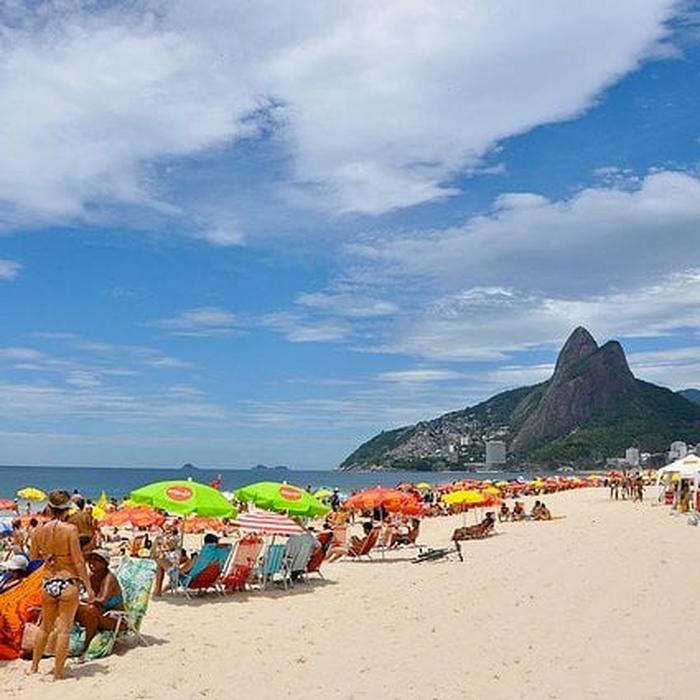
It’s summer vacation time, and you know what that means: letting loose and having fun! But, be wary of loosening the purse strings too much—yes, you’re excited to plan a vacation, but you don’t want to end up in trouble budget-wise for the rest of the year. (And do your friends really want hand-knitted scarves for Christmas presents, again?)
The good news is, with some budgeting savvy, you can have a great summer trip without draining your entire savings account. We’ve put together a guide on how to keep your vacation costs under $1,000. And if you’re on a smaller budget (or if you’ve been saving for a bigger trip!), you can use the same percentages listed below, and just adjust the numbers up or down.
Transportation Costs 25% = $250
This total includes all the costs of getting around—including gas, flights, train fare, and rental car. For a budget of $1,000, aim to spend $250 total on all your transportation.
If you’re road-tripping, this means a one-way drive of about 8-10 hours, or $120-$150 in gas each way. (Though, check out GasBuddy.com to get a closer estimate based on your vehicle and local gas prices.) Also factor in the gas you’ll need to drive around during your stay.
If a drive to your destination would take longer than 10 hours, you’re likely better off taking a short flight. Check out PointHub or MileWise to see if it’s worth cashing in your frequent flier miles. If not, buy your tickets on a Tuesday at 3 PM ET (preferably 8 weeks out)—which is the best time to buy, according to FareCompare.
Lodging 40% = $400
Once you’ve picked your destination and decided how you’re getting there, it’s time to find a place to stay. Budget 40% ($400 of your $1,000 total) towards hotel rooms or house rentals—including parking or resort fees, taxes, and cleaning deposits. If you’re planning a four-night stay, that’s an average of $100 per night.
If you’re flying, you can certainly save money on hotel fees by looking for packages that bundle your flight and hotel together. Priceline, Orbitz, and Kayak are the big guys to help you out with this, but also check out sites like Hipmunk, BookingBuddy, and LowFares.com.
You can also save by staying with friends in the city you’re visiting (with a promise to return the favor for them, of course!)—or even swap houses for the week! If you’re really adventurous, consider trying out CouchSurfing. Set up a profile and search for a host in your destination city—all for free! You won’t pay any sort of fees to your host, either—though sharing a gift or cooking her a nice meal is a good way to show your appreciation. As long as you’re comfortable sleeping at a stranger’s house for a few days, it’s a great way to save money and make new friends. (Caveat: I don’t recommend doing this alone!)
Food 25% = $250
Out of your $1,000, plan to spend $250 on meals, eaten in or out. Breaking that down further for a four-night, five-day trip, that’s about $50 per day or $17 per meal.
Of course, you don’t have to stick to that breakdown—you can save money by renting a place with a kitchen and preparing your own meals and snacks, then indulging in one or two gourmet restaurant outings. Or, by making your own breakfast and lunches, you can give yourself the leeway to head to a restaurant for dinner each night. Make sure to ask the concierge what deals are available to guests, too—many hotels offer free breakfast or discounts for nearby restaurants.
Activities and Adventures 10% = $100
Tours, surfing lessons, bike rentals, park entrance fees—this is where you can be most tempted to spend. But if you’re on a budget, remember that there are tons of free and low-cost activities to fill your itinerary.
Keep your costs low by packing picnics (so you’re not stuck spending $17 on two hot dogs in a tourist trap) and scouting potential plans ahead of time. If outdoor adventures are your thing, check out the National Parks Service website, where you can pick a park to visit based on its location or the activities you’re interested in. And visit Uptake to pour over city profiles and connect with other travelers about the best sight-seeing where you’re headed.
Budget-Friendly Packing
Finally, make sure to pack sunscreen, memory cards, and all of your other essentials—forgetting to pack vacation basics will only force you to buy them at a higher cost at those kiosks at the hotel or airport. Take advantage of this exhaustive packing checklist from TravelSmith to ensure you don’t overlook anything—especially the chargers, cases, and cords for your electronics, which can be some of the most expensive (and frustrating) items to leave behind.
By extending your budget know-how to your vacation planning, you won’t be stuck breaking the bank with your summer trip. Sure, it might be more work ahead of time, but knowing that you can afford your vacation will help you relax and enjoy the time away. Have fun!